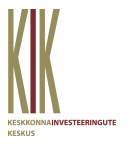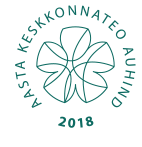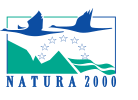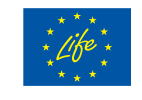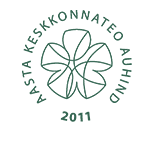|
Conservation and restoration of petrifying spring habitats (code *7220) in Estonia
Project background Petrifying springs with tufa formation (a priority habitat type of the Habitats Directive) are among the most valuable and ecologically interesting European ecosystems, and also among the most difficult to protect. Protection of springs is not only a question of protecting the physical feature defined as the spring. In Estonia, the springs can form complexes with transition mires, fens, calcareous grasslands, etc. In order to preserve this habitat, it is also essential to preserve its surroundings and the entire hydrological system, not only within the habitat type’s topographical catchment area, but also its hydrological catchment area. Project objectives The LIFE Springday project aims to prevent the degradation of petrifying springs and to achieve or maintain their “favourable” conservation status in three Natura 2000 sites in Estonia. This will also help to improve the conservation prospects of the many associated rare and endangered species and habitats that they support. The project’s main objectives are to: • Carry out detailed field surveys and data analyses using best available methods; • Draw up a conservation plan and monitoring guidelines; • Formulate protection proposals that will be provided to competent authorities; • Restore the surroundings of springs (clearing of shrubs, trees and forest-like vegetation); • Restore the natural hydrological regime of springs and their surrounding habitats (fine tuning of the water level through drainage-ditch filling, dredging of neighbouring streams, etc); • Remove mud, reeds and floating herbage from spring streams and lake Prästvike; • Design and create rapids (to disperse stones into the stream-bed of the springs); • Remove obstacles from spring streams; and • Construct/reconstruct wooden nature trails with information boards, in order to prevent trampling around the springs. Project's results • A maintenance strategy and detailed conservation plan for petrifying spring habitats; • Publication of long-term monitoring guidelines; • The restoration of the natural hydrological regime of petrifying springs and their surrounding valuable habitats, covering an area of 2 240 ha; • Improved habitat and hydrological characteristics for nearly 150 spring habitats in three project areas; • 13 800 m of drainage ditches filled, in order to restore the natural water levels; • Shrubs, reed and floating plants removed from a 38- ha area related to petrifying springs and their surrounding habitats; • Allikasoo study trail (1,8 km) at Viidumäe and Allika nature trail (2 km) at Vormsi island constructed around the spring habitats, in order to prevent major trampling; and • Greater awareness about petrifying spring habitats, conservation approaches and maintenance measures among the wider public and relevant field experts/ specialists. |
Execution of specific conservation actions was carried through successfully! First, the main task - regulation of the hydrological regime by closing the ditches has been taking part at two project areas - at Kõrvemaa (C1) and Viidumäe (C3). Alltogether, 13,8 km of ditches were closed – 12,1 km at Viidumäe and 1,7 km at Kõrvemaa. Also, the favorable ecological status at Viidumäe site is preserved by correcting the register of the amelioration systems and excluding the existing ditches from the regular maintenance, which leads to the degradation of the drainage system in areas, where concrete conservation activities are not allowed, like reserve areas.
Second, the removal of the plants and vegetation from the springs and surrounding areas has been carried through at all three areas (C1, C2 and C3). The trees and bushes were removed from the area of 5 hectares around the springs at Kõrvemaa. The removal of the reed at the Vormsi site (C2) started in 2014, continued and repeated in 2015-2017. The last action that site took place at the beginning of 2018. Finally, the reed and bushes was removed from over 20 hectares of the lake Prästvike. About 3 hectares of area of the Viidumäe site was cleaned during the preparation of the conservation work. In addition to the tasks of the Proposal, our Project has initiated an important, large scale habitat restoration activity at Viidumäe site. The cooperation with Estonian Forest Management Centre during the preparation of the conservation actions led to the restoration of 10 hectares of spring-fen habitat by the national forest management authority. The forest was cut and removed from the former spring-fen area, with the habitat recovery potential, to where the groundwater started to flow after closing the ditch and new streambeds created by our Project. More than 38 hectares of former spring- and springfen habitats and Lake Prästvike was cleaned from the forest, bushes and reed, in order to facilitate the recovery of the natural habitat and improve the conditions of the petrifying springs.
Thirdly, the restoration of existing and building new nature trails at Viidumäe (C2) and Vormsi (C3) sites has been carried through. 320 m of wooden trail, 2 observation platforms and information panels and stairway was reconstructed at the Viidumäe site. Total length of the re-opened trail is 1,8 km. Using of the plastic construction materials (Plastrex), produced from the recycled domestic waste, was innovative apprach, practiced first time in construction of the public nature trail in Estonia. At Vormsi site 410 m of the wooden trail was reconstructed, 2 observation platforms renovated, 1 new platform built and 3 notice board stands constructed. Total length of the trail is nearly 2 km. |
WILDLIFE ESTONIA
NGO Wildlife Estonia is established in 2000. Our aim is to protect rivers and other aquatic habitats. We care about the nature, biodiversity and fish in particular.
HABITATS
Springs, rivers and lakes are our common treasure. The more natural status they have the more precious they are.
COMPETENCE
Successful application and implementation of river restoration and fish population status improvement projects. Scientific ichthyology studies with traditional and modern bio-telemetric methods.
Disclaimer on LIFE projects.
LIFE projects are co-financed by the European Union LIFE program. Views and opinions expressed are however those of the author(s) only and do not necessarily reflect those of the European Union. The European Union can not be held responsible for them.
CONTACTS
Eesti Loodushoiu Keskus, registration 80124928,
Address: Veski 4, 51005 Tartu, ESTONIA
Send e-mail:
Contact phone (+372) 51 76886
